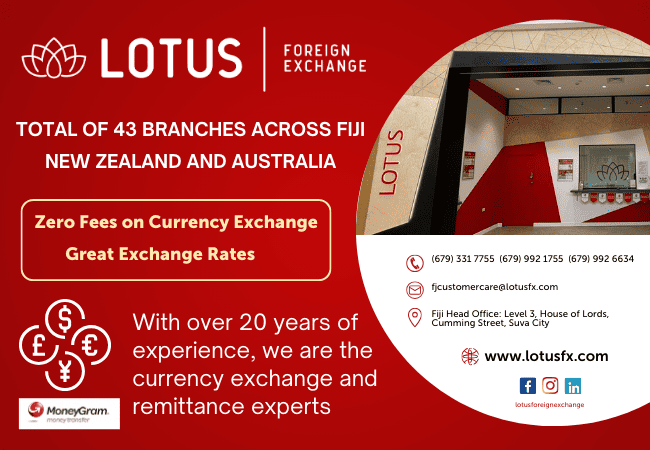Warwick Marlow on turning trash to cash, and bringing Fijian art into hotel suites
By Sera Tikotikovatu-Sefeti
Walking into the domain of an artist is an incredible feeling. Everywhere you look is a mirror of the artist’s beautiful mind, every corner demanding to be noticed.
This is certainly the case when you step foot into Warwick Marlow’s abode, decorated with his handiwork, from recycled plastic bottles spun into beautiful flowers, gorgeous leaf jewellery and fish swimming up a wall, to pieces of art reflecting different spiritual guides, a portrait of himself as a baby, and various beautiful objects made by other women.
However, the biggest statement of all is his love for the colour purple. The walls, his t-shirt, and even his reading glasses are different shades of purple, a colour usually associated with mystery, spirituality and imagination.
Marlow was exposed to the world of art at a young age by his mother, the first Miss Hibiscus, Liebling Elizabeth Marlow, herself an artist who has exhibited in Fiji, France, Australia and other countries. Her love for art inspired both her sons, Craig and Warwick, whose lineage can be traced back to Rotuma, Samoa, Scotland, Germany, and England.
“I suppose it started from the beginning,” Marlow said. “Mum was very creative. We had a house filled with pets and craft materials.”
However, the work with plastic bottles Warwick is known for stems from an experience he had as a child, seeing two different worlds and ways of life, and deciding to do something about it.
A life’s work
“We weren’t wealthy, but we were privileged in the sense that my father worked for Air New Zealand and earned local wages,” Marlow explained.
“So, at a very young age and in very quick succession, I got to see the highlights of Hollywood, Beverly Hills, because my parents had friends who were actors. We got to live with them in Bel-Air and got to see that upper end of the market.”
He recalls that after a world trip and a stop in Los Angeles, his family ended up in India. “You can imagine witnessing, at a young age, LA and then the slums of India. At a really young age, it impacted on me that there was something completely wrong with the way the world was working or not working. I recognised it quite young. I was nine years old at the time,” Marlow said.
“I think that experience went on to really inform my whole life’s work,” he added.
He worked in tourism for a while, dreaming of becoming a hotel manager. But then he changed direction to take up industrial design with architectural firm, then graphic design, before he started practising art full-time. In 1987, he was fortunate to join a group at the University of the South Pacific to train with the farmed Vanuatu-based artist, Nicolai Michoutouchkine.
Michoutouchkine was a French artist of Russian origin, who collected Pacific art for over 60 years. Marlow said training with Michoutouchkine and his wife, who is from Wallis and Futuna, at their art-filled property was inspiring.
“Whatever benefit that flowed to their property soon flowed to the community in a sustainable way. That kind of imprinted on me quite early, and I went permanently into fashion design, in fabric printing, and the natural extension to that was jewellery designing,” he continued.
But Marlow said he also wanted to impact the waste stream and management. “Everywhere I looked, I just saw mountains of waste. It seemed to be the problem was not unsolvable; it just needed some injection of creative imagination and using the creative industry as the vehicle to empower entire neighbourhoods, just by giving them the skills they needed to pick up the rubbish and [turn it] from trash to cash,” said Marlow.
Trash to cash
Marlow seeks to inspire, empower, and share his talent so that others can make a difference in their own lives. He has worked with South Pacific Tourism Organisation as a creative consultant to national tourism organisations in Marshall Islands, Nauru and Federated States of Micronesia, teaching community members to make jewellery and artefacts from PET plastic bottles.
Locally, one of the most meaningful projects has been working with the Solomon Islands Community at Wailoku. “We conducted training to create seedling raisers from waste plastic and introduced composting techniques to bolster interest in organic farming. At the same time, we conducted jewellery classes from waste plastic bottles for the mothers,” Marlow said.
“It was in partnership with the British Council and Save the Children Fund. It was the first training where tools and materials were gifted to the participants, so it was very meaningful for all concerned,” he added.
He has projects in Koro Island in the pipeline and wants to visit other parts of Fiji to share his creative talent.
Working with plastic began at the suggestion of his mother, who has watched him using a soldering iron to carve styrofoam. “She was sitting there one day and was wondering what I was going to do with all the plastic bottles and a pair of scissors. Then she asked me about the machine I used to carve styrofoam, so we brought it and started testing it. My brother came up with the original range of plastic wear and it proved to be really popular,” Marlow continued.
Warwick said his brother, Craig, moved on other artwork, but he continued in the medium.
Art and tourism
Marlow says living in Suva has meant he has been able to survive as an artist due to expatriate clients, “looking to take something back home.”
He says the challenge for young people is to find new economic riches and income streams.
The trash to cash idea can very well be a solution for an industry that generates a lot of waste. “The large-scale hotels in Fiji are producing a massive scale of waste, especially in the forms of wine bottles and water bottles. Luckily, we have ways to mitigate that.
“At the moment, I’m in talks with a major hotel operator to set up a system where the trash streams are made available to the land-owning units, and they turn those into sustainable products.”
He continues: “This is a way to get the environment conversation happening. The tourists have the vehicle to really actively participate in sustainable products [and], by buying from the women, they are putting cash directly into the pocket of the community,” said Marlow.
“It enhances the guest experience, empowers the women’s livelihoods and the community at large because it’s a flow-on effect, and the hotel gets to mitigate its waste streams all in one simple program,” he added.
Marlow thinks there is room for the tourism industry to do much better in terms of supporting local artists and craftspeople. “You know, I cut my teeth professionally in large quantities for hotel developments in Fiji, because I thought it was really important that Fiji tourism have Fiji artefacts as part of the cultural package. I think it’s a terrible blow to the quality of the guest experience that when they get to Fiji, saving for years and spending thousands of dollars, and when they get here, their rooms are decked out in Indonesian artwork,” Marlow continued.
“I mean, don’t come up to us three months before your hotel is opening and say we need 800 pieces of artwork, because we can’t deliver. But if we are brought into the process early on … we could be creating the artwork while the hotel is being constructed,” Marlow explains.
He says given enough time, resources and respect, artists can get the job done.
“There’s got to be a meaningful space where everyone can come together, Fiji Tourism, as the self-appointed arbiters of our national image, you know they should be in the conversation, the hotel developers, Fiji Arts Council, and wherever possible, we should be sourcing these artworks from native materials from local landowning units,” he said.
Now truly a mentor to craftspeople and artists, Marlow’s advice to young people following in his path: “Originality is key; being able to come up with fresh ideas that are relevant to the issues of the times.”
“Young people [also] need to be mindful that respect is everything in this world, and if you want to be heard, you need to be prepared to listen. A teacher who has forgotten how to learn is no use to anyone. Be positive and make your life count for something meaningful in the lives of others.”
Look out for jewellery and objects made from plastic bottles by women taught by Warwick at smaller resorts and markets around Fiji.
This article appeared in Fiji Traveller’s inaugural print issue. For subscription information visit our website.


2 Comments on “Travels in Art”